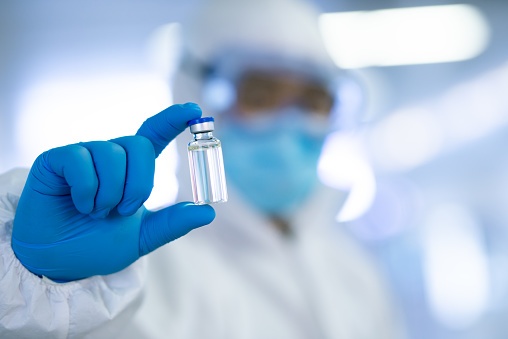TMPRSS2 is an important drug target to develop anti-viral drugs against COVID-19. MM3122 is a lead candidate that has shown promising result in vitro and in animal models.
Hunt is on for discovering novel anti-viral drugs against COVID-19, a disease that has created havoc in the past 2 years and has brought down the economies of several countries in the world. ACE2 receptor and type 2 transmembrane serine proteases (TMPRSS2) both represent excellent targets for drug discovery as they both facilitate virus entry into lung epithelial cells1. The receptor-binding domain (RBD) of the SARS-CoV-2 viruses attaches itself to the ACE2 receptor and the TMPRSS2 protein helps cleave the spike (S) protein of the virus, thereby initiating viral entry and also helps escaping from the immune system2. This review article will focus on the role and expression of TMPRSS2 in the human population and why it presents as an attractive therapeutic target for developing inhibitors and development of MM31223, a novel drug that acts as a TMPRSS2 inhibitor.
TMPRSS2 belongs to the member of serine protease family and is responsible for several pathological and physiological processes that take place in human body. TMPRSS2 cleaves and activates the SARS-CoV-2 Spike protein during membrane fusion, thereby augmenting viral entry into the host cells. Studies have linked the genetic differences, gender differences and expression patterns of TMPRSS2 with the susceptibility and severity of COVID-19 disease. It has been shown that the TMPRSS2 activity was higher in Italian population than the East Asian and European counterparts that led to a higher degree of mortality and severity of COVID-19 disease in Italy4. In addition, expression of TMPRSS2 increases with age that makes older people more vulnerable to COVID-195. Another study showed that higher testosterone levels are linked to increased TMPRSS2 expression1, thereby making the male population more vulnerable to COVID-19 as opposed to females of the elderly age group. The higher expression of TMPRSS2 has been implicated in the development of prostate cancer in men6.
The development of MM3122 was based on rational structural based drug design. This belongs to the class of compounds known as ketobenzothiazoles, which are structurally distinct and show improved activity over the existing known inhibitors such as Camostat and Nafamostat. MM3122 had an IC50 (half-maximal inhibitory concentration) of 340 pM (picomolar) against recombinantly expressed TMPRSS2 protein, and an EC50 of 74 nM in inhibiting cytopathic effects induced by SARS-CoV-2 virus in Calu-3 cells3. Based on mice studies, MM3122 exhibits excellent metabolic stability and safety and has a half-life of 8.6 h in plasma and 7.5 h in the lung tissue. These characteristics, along with its efficacy in vitro, makes MM3122 a suitable candidate for further in vivo evaluation, thereby leading to a promising drug for treatment of COVID-19.
***
References:
- Seyed Alinaghi S, Mehrtak M, MohsseniPour, M et al. 2021. Genetic susceptibility of COVID-19: a systematic review of current evidence. Eur J Med Res 26, 46 (2021). DOI: https://doi.org/10.1186/s40001-021-00516-8.
- Shang J, Wan Y, Luo C et al. 2020. Cell entry mechanisms of SARS-CoV-2. Proceedings of the National Academy of Sciences May 2020, 117 (21) 11727-11734; DOI: https://doi.org/10.1073/pnas.2003138117.
- Mahoney M. et al 2021. A novel class of TMPRSS2 inhibitors potently block SARS-CoV-2 and MERS-CoV viral entry and protect human epithelial lung cells. PNAS October 26, 2021 118 (43) e2108728118; DOI: https://doi.org/10.1073/pnas.2108728118
- Choudhary S, Sreenivasulu K, Mitra P, Misra S, Sharma P. 2021. Role of Genetic Variants and Gene Expression in the Susceptibility and Severity of COVID-19. Ann Lab Med 2021; 41:129-138. DOI: https://doi.org/10.3343/alm.2021.41.2.129
- Peng J, Sun J, Zhao J et al., 2021. Age and gender differences in ACE2 and TMPRSS2 expressions in oral epithelial cells. J Transl Med 19, 358 (2021). DOI: https://doi.org/10.1186/s12967-021-03037-4
- Sarker J, Das P, Sarker S, Roy A K, Ruhul Momen A Z M, 2021. “A Review on Expression, Pathological Roles, and Inhibition of TMPRSS2, the Serine Protease Responsible for SARS-CoV-2 Spike Protein Activation”, Scientifica, vol. 2021, Article ID 2706789, 9 pages, 2021. DOI: https://doi.org/10.1155/2021/2706789
***




































